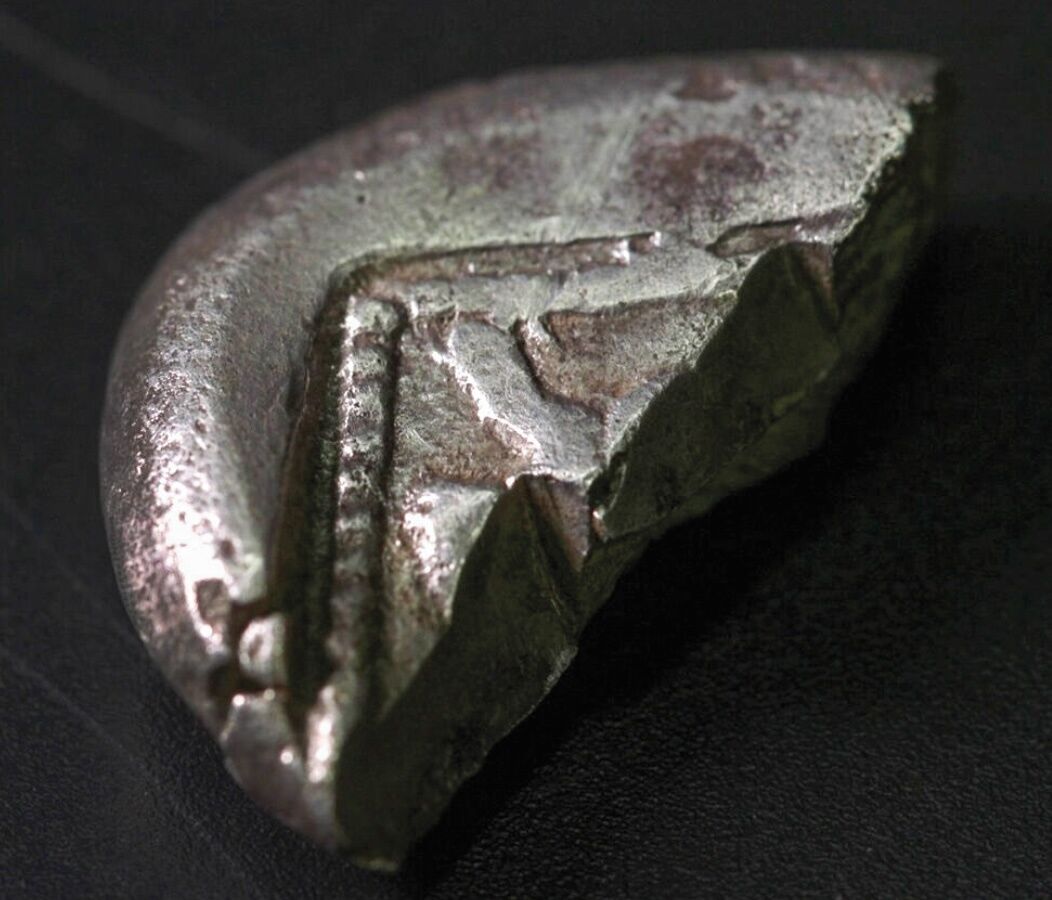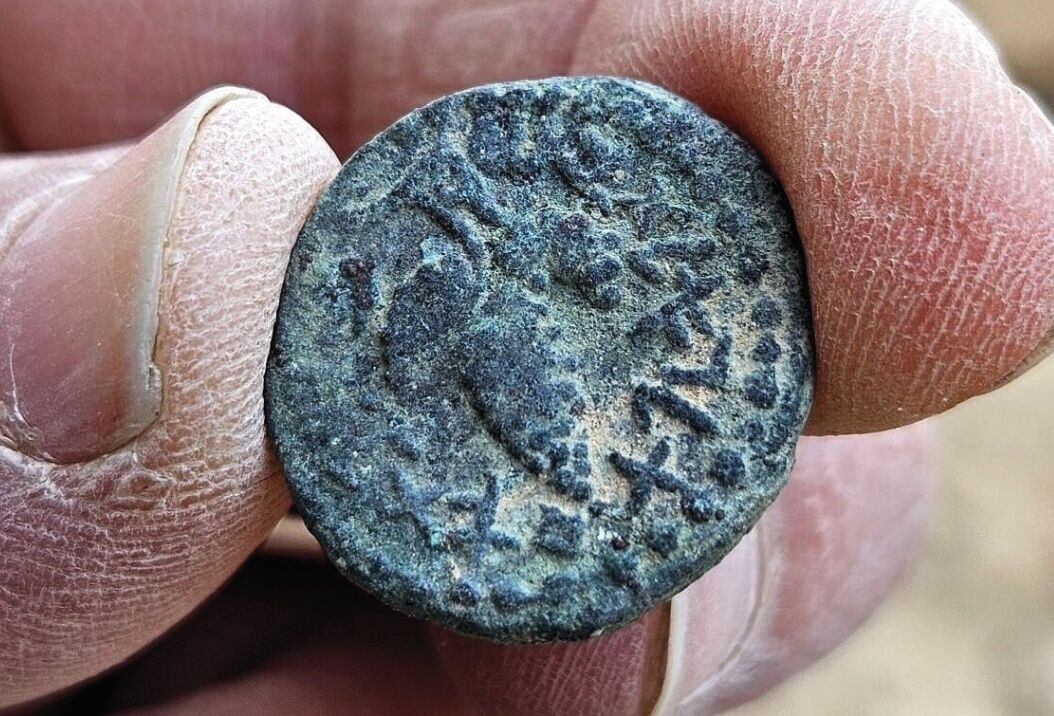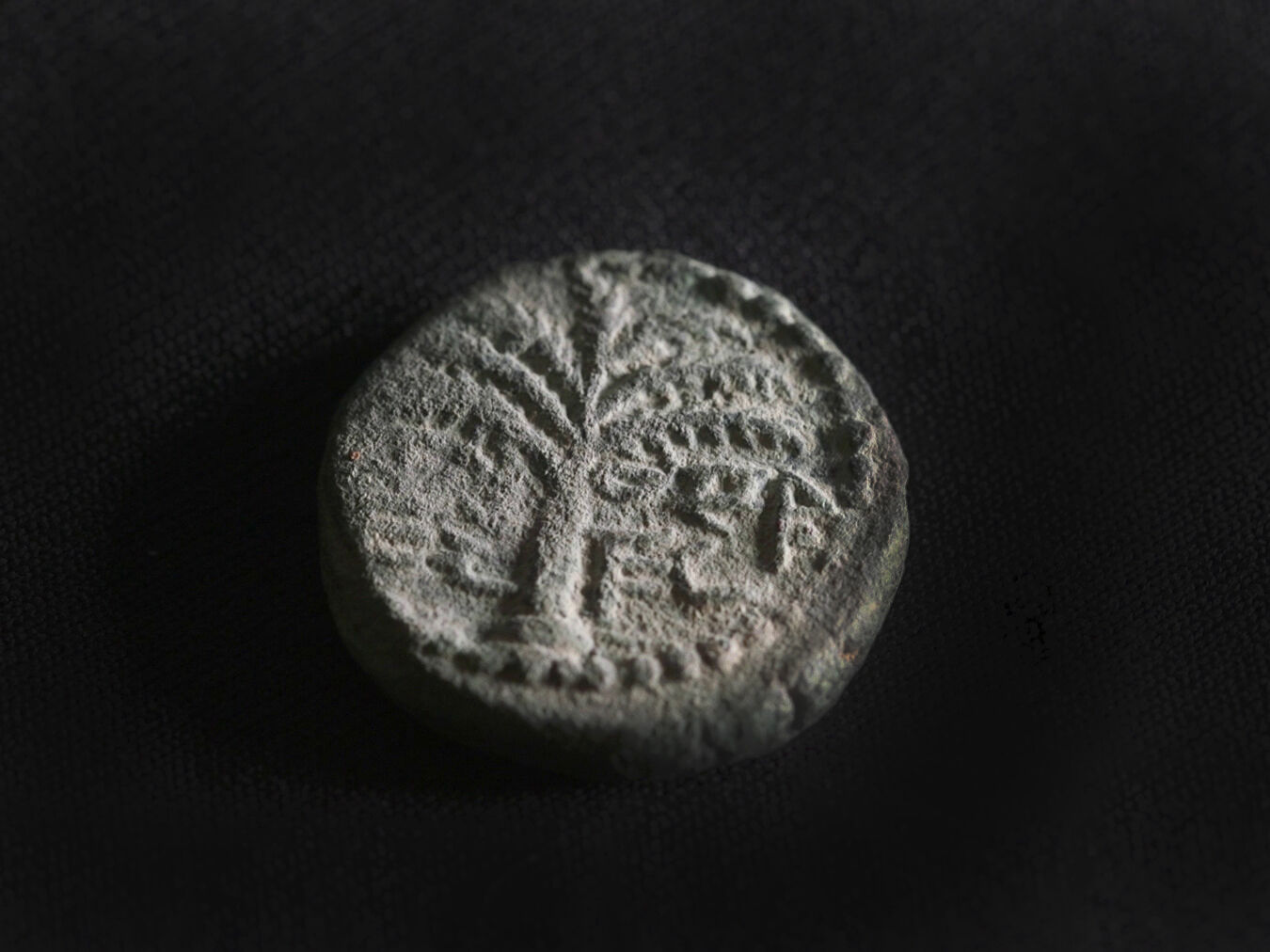Coins are vital to historians and archaeologists. Though small, they can provide firm dates that can give context to a layer or an entire site. A coin found at the base of a house, for example, can show that the structure was built after the date that coin was minted. Coins are also excellent indicators of who traded with whom, for what, and how much. Finally, the text or images on coins will often depict important cultural events or figures, and this can help historians better understand the society in question.
Two important coins discovered in the past few months provide insight into Judah during two vastly different periods: the Persian Period and the Bar Kokhba Revolt.
Persian Period Coin
An exceptionally rare silver coin, dating to the mid-sixth century b.c.e. (Persian Period), was recently discovered at a small site in the Judean Hills. “The coin is extremely rare, joining only half a dozen coins of its type that have been found in archaeological excavations in the country,” Dr. Robert Kool, head of the Israel Antiquities Authority (iaa) numismatic department, said. “The coin was minted in a period when the use of coins had just begun.”

The coin is pressed with a square stamp, demonstrating an earlier, “sunken” minting. Coins would eventually utilize the more sophisticated “protruding” stamp style. According to Dr. Kool, “The coin belongs to a group of very early coins that were minted outside Israel in the regions of ancient Greece, Cyprus and Turkey.”
The early dating of this coin is also evidenced by the fact that it was intentionally cut into two pieces to be used as a form of “hacksilver” (a pre-coin currency, where irregularly shaped pieces of silver were valued by weight). According to the iaa, this indicated that the economy was still in transition; using coins for trade and commerce wasn’t yet universal. This coin gives us evidence of “the process whereby global commerce moved from payment by weighing silver pieces to the use of coins.”
‘Eleazar the Priest’ Coin
On March 4, the iaa announced the discovery of another rare coin, this one minted in “Year One” of the Bar Kokhba Revolt (132 c.e.).
This particular coin, discovered in the Mazuq Ha-he’teqim Nature Reserve, is embossed in ancient paleo-Hebrew script with the name “Eleazar the Priest.” It was found alongside three other coins from the same period, each bearing the name “Simon,” referring to the leader of the revolt.
Traditional Jewish motifs were also employed in the design, with a date palm on the side that bears the name of the priest. On the other side, a bunch of grapes is displayed alongside the inscription, “Year One of the Redemption of Israel” (similar to the message carried on the final coins of the Great Revolt in 70 c.e.).


Who is Eleazar the Priest? One candidate is Rabbi Eleazar Hamoda’i (aka Eleazer of Modi’im), who was a cousin of Simon Bar Kokhba. “It seems that Rabbi Eleazar Hamoda’i played a significant religious role at the time of the Bar Kokhba Revolt, and he was living in the town of Beitar—the location of the revolt headquarters,” the press release stated. Eleazar Hamoda’i was slain by the Bar Kokhba for a disagreement over the rebellion.
Coins and currency were controlled by the Roman government at this time. State-authorized coins were stamped with the image of the emperor. Revolt coins were a way for the rebels to reject the authority of Roman rule and declare their independence. One particularly notable feature of Jewish revolt coins is the use of ancient Hebrew script. This deliberate choice to use the early script of the biblical kingdom represents a callback to ancestry and history and to the desire to reestablish the kingdom.
This coin presents a bookend of the Judean people’s history in ancient coinage. An autonomous Jewish state would not mint coins in Israel again until 1948.
Between the Persian Period and the Bar Kokhba Revolt, coins became a centerpiece of commerce and identity in Judea. Today, they are objects of fascinating study for historians, archaeologists and numismatists.

